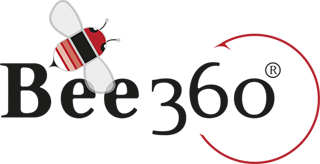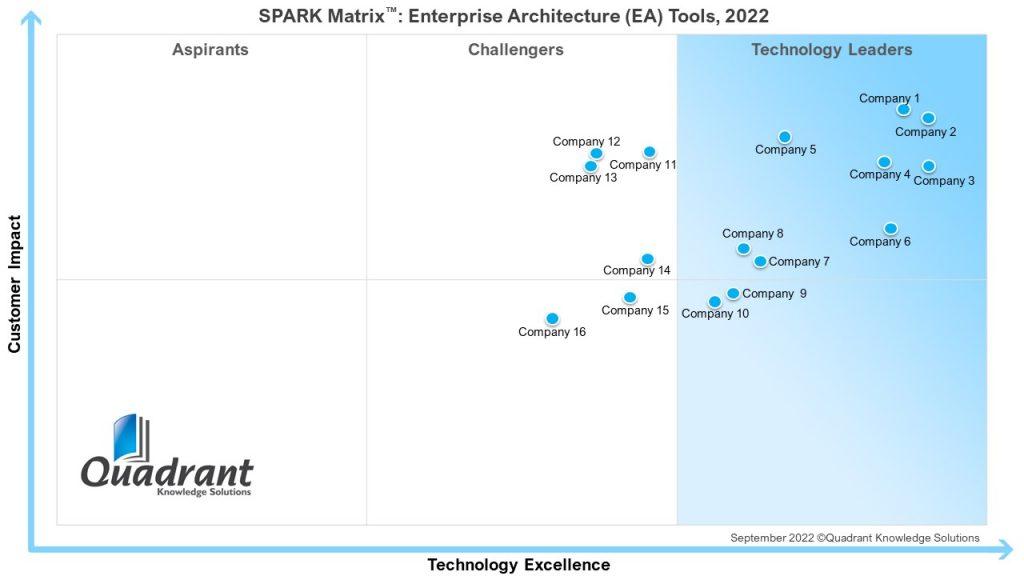Enterprise Architecture Management
Implement enterprise architecture pragmatically
Transparent. Integrated. Holistic.
Bee360 Enterprise Architecture addresses the biggest hurdle of architecture: implementation. With our Bee Approach we capture the enterprise architecture along the change process. You control the change through the architecture via the portfolio in an integrated manner and thus obtain the necessary financing. This makes the value of enterprise architecture tangible.
By integrating the transparent architecture, you reduce your costs and make faster decisions whether high-level architecture or detailed process and technology perspective – all people involved can view the information that are relevant for them, collaborate with it and understand and use the synergies between all actors.

"Bee360 makes process management so concrete that we use it as a guiding structure for S/4 and C/4 Hana migration. It has also formed the basis for our training in the SAP environment for several years."
Janwillem Wehn
Head of Workforce Management
Miele & Cie. KG

"The Log4j vulnerability required immediate and coordinated action. With Bee360 EAM, we had full visibility across all our technology artifacts. We were able to easily define measures and track their execution."
Dirk Kloska
Lead IT Enterprise Architecture Management
dormakaba Germany GmbH
Discover the possibilities of our EAM platform
Shaping the future of your company with intuitive features. From vision to reality.
- INNOVATION MANAGEMENT
- STRATEGY EXECUTION
- CAPABILITY MAP
- BUSINESS ARCHITECTURE
- APPLICATION ARCHITECTURE
Identify and adapt technological trends seamlessly into your target architecture with the help of industry-specific radars. EAM allows the early and holistic integration of technological trends, which is considered a success factor for establishing oneself in the market.
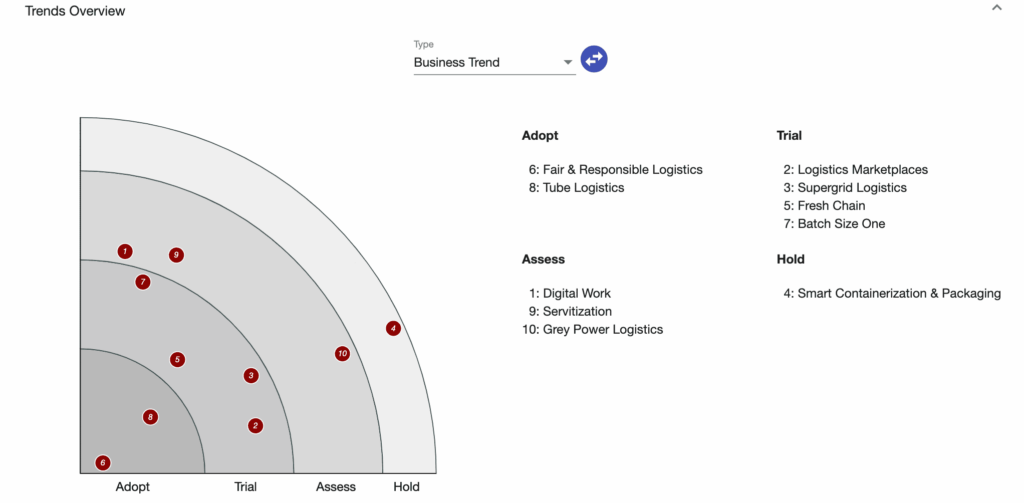
Align your strategies with your target architecture and your future capabilities.
Define strategic initiatives using roadmaps, associated projects, services, and agile teams. Go deeper to understand the impact on enterprise architecture.
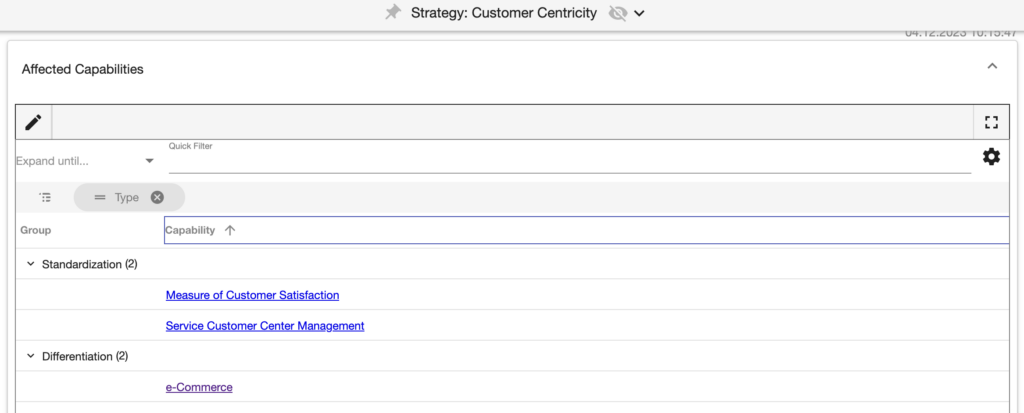
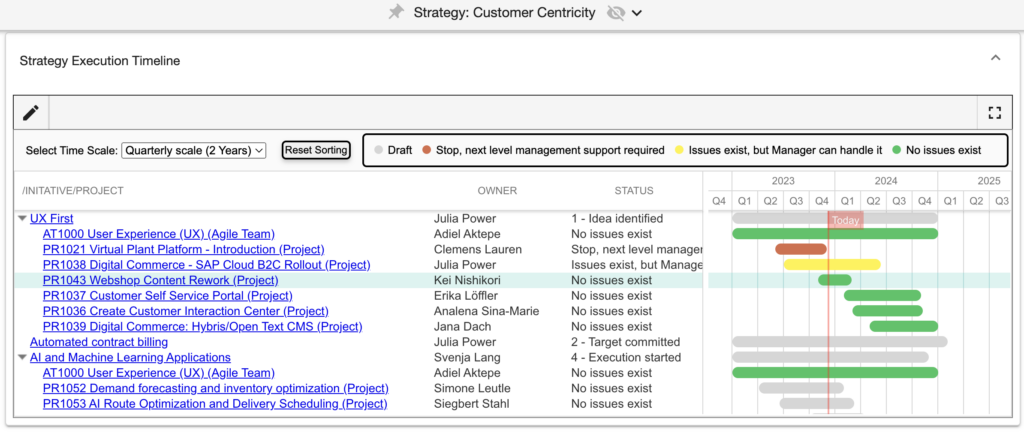
Structure your enterprise architecture from a business perspective. Capture your capabilities, create capability maps and develop your architecture in line with the business. Use capabilities as a common language between business and IT. Business-IT alignment helps you align capabilities with your strategies to achieve your organization’s mission. Orient and structure your current and future capabilities, processes and applications along an understandable map towards the target architecture.
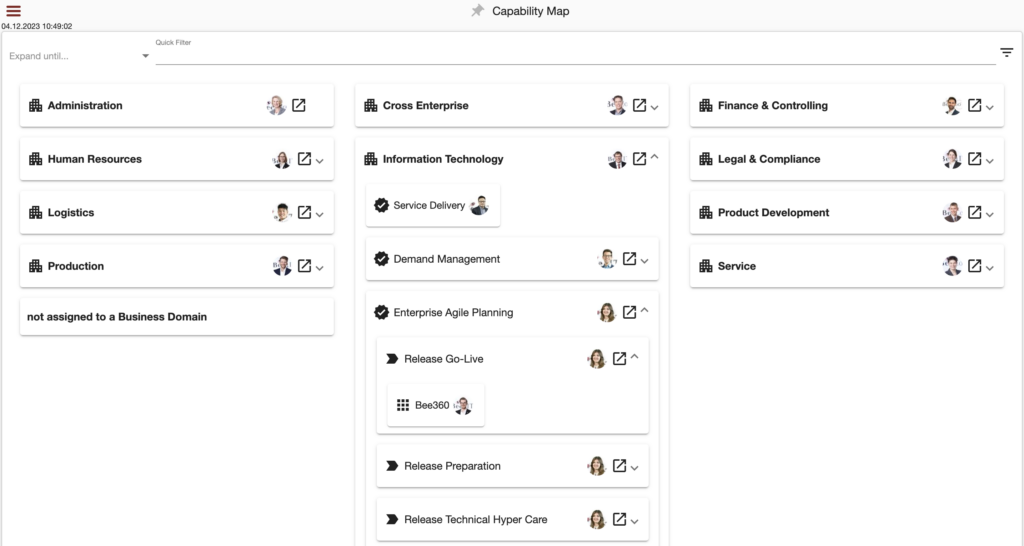
Define and manage your value chains, processes and process variants in order to understand and manage the business value creation. Have all related architecture artifacts at a glance and model new processes in a collaborative environment. Document and publish user documentation if desired.
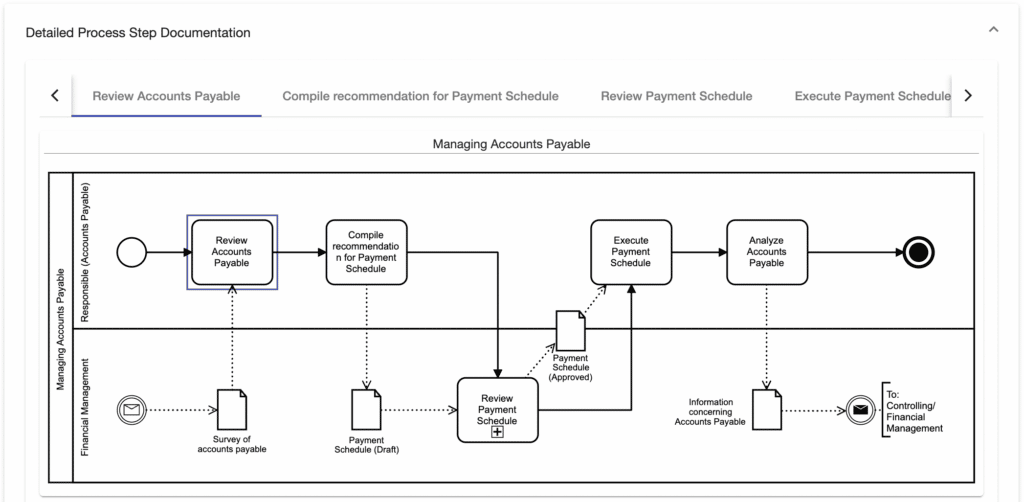
Manage your Application Portfolio based on classifications and BIAs and structure your investment decisions along with the operational state and future of the system landscape. Transform towards your target architecture via transparent architecture roadmaps at a global level. With the help of Application Portfolio Management, you can immediately see which applications are not being used or not relevant and can therefore be eliminated. Get started with Application Portfolio Management in just a few steps using the Excel upload functionality and evaluate your applications directly.
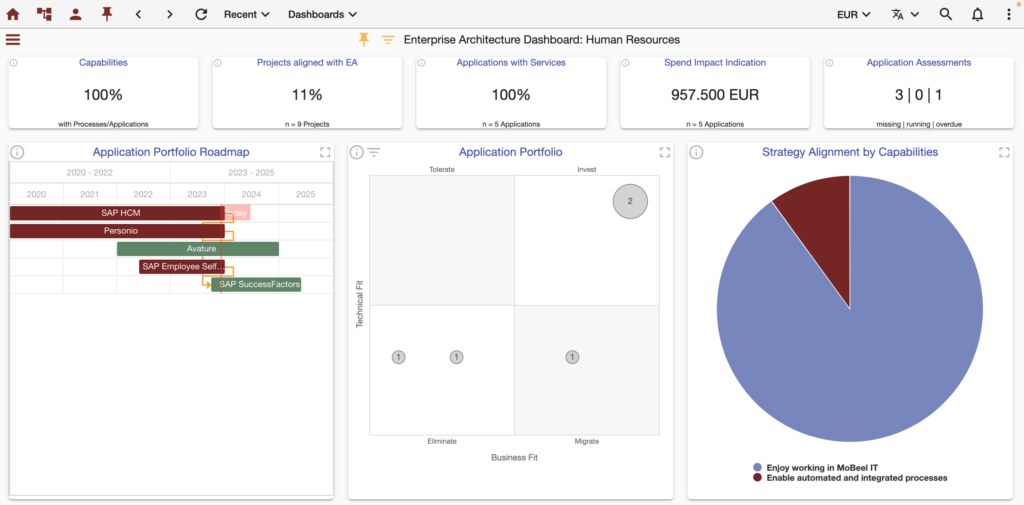
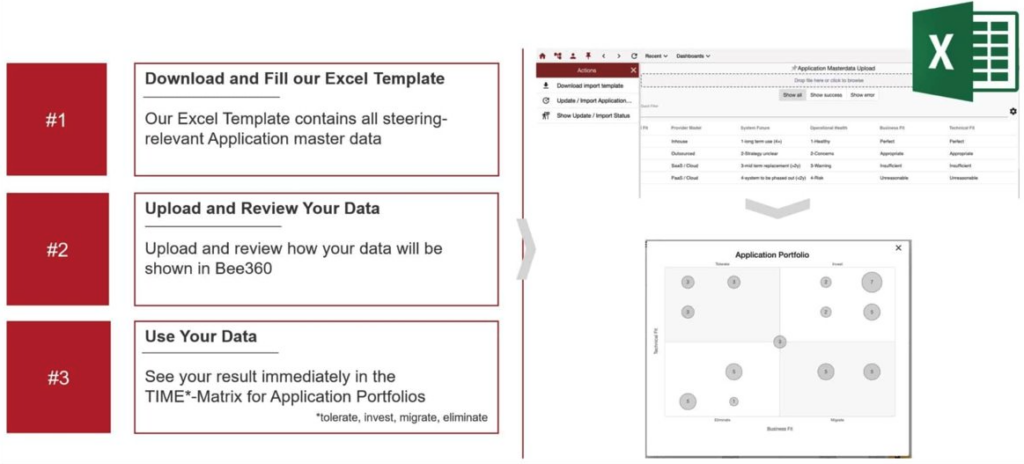
- TECHNICAL ARCHITECTURE
- ROADMAPS
- COLLABORATIVE EAM
- SOLUTION DESIGN
- GOVERNANCE, RISK & COMPLIANCE
Have a collaborative transparency in your technical architecture, offering a detailed visual representation of your system landscape from technologies to applications, providing a clear overview of the interdependencies driving your technology environment.
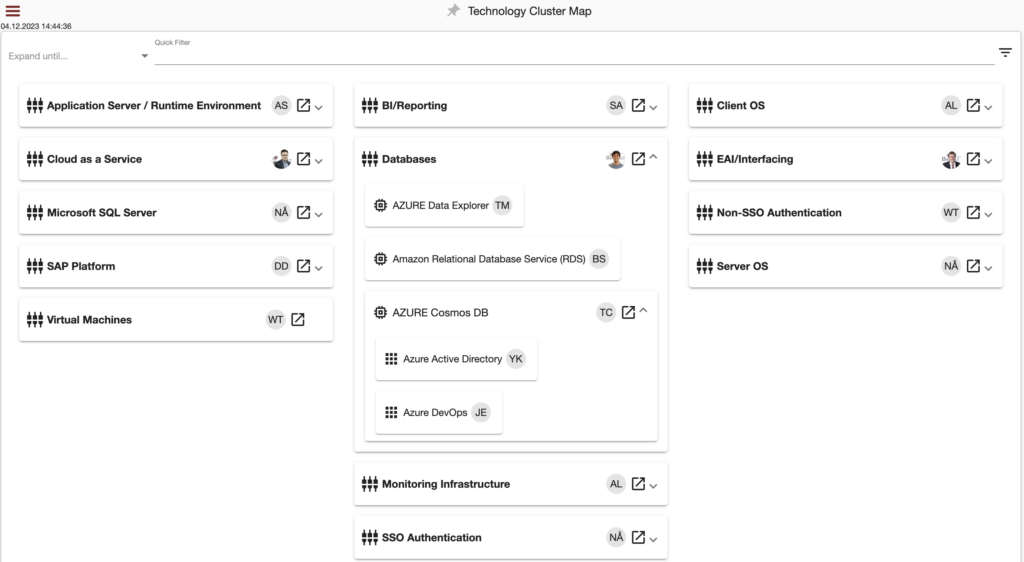
Track the progress of your digital transformation across your enterprise architecture. Understand how requirements and projects from your organization’s portfolios are driving change in your value chains, processes, application portfolio and technologies. The transparent information about architecture dependencies enables IT projects to be approached in a structured manner, completed significantly faster and project costs to be reduced.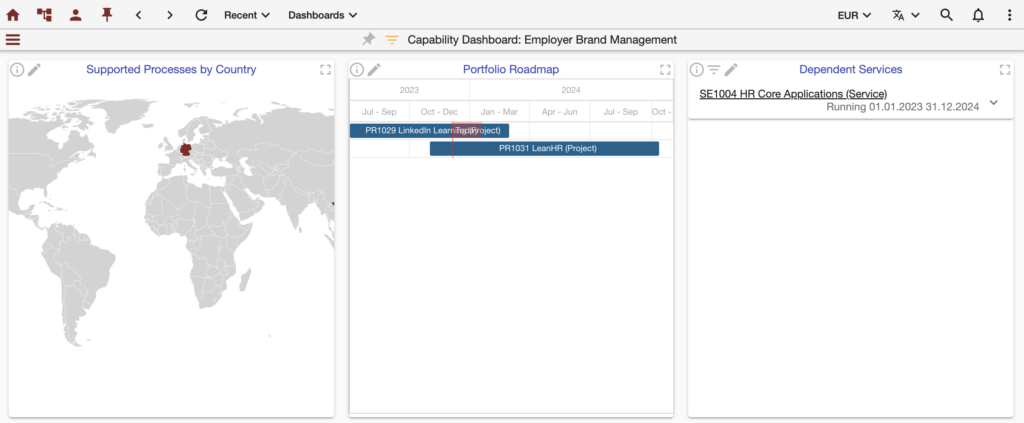

Use lightweight EAM Kanban boards for managing your architecture artifacts in a collaborative way. Effortlessly drag and drop processes, applications or technologies through stages, providing a visual and intuitive way to streamline your workflow.
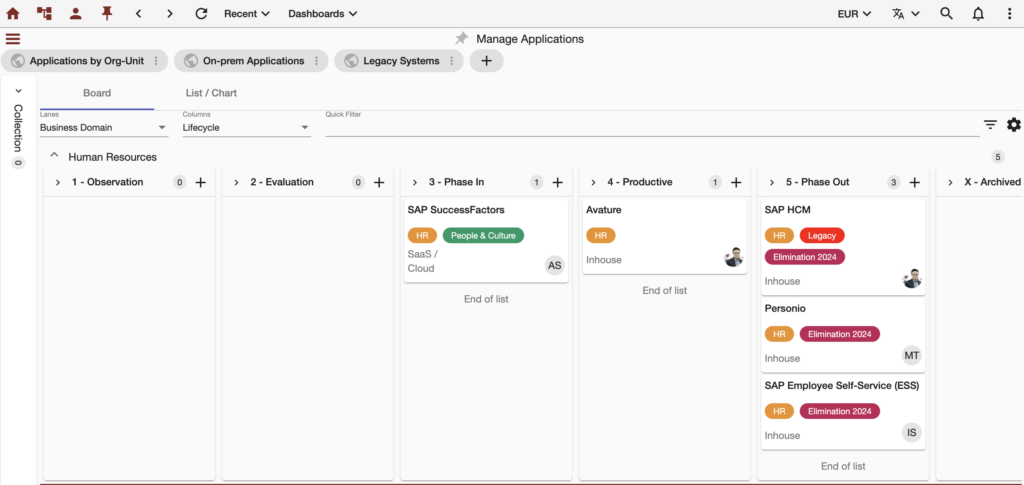
Use integrated solution design features which empowers you to model and sketch technical solutions effortlessly for upcoming demands and projects. Make sure that all solution designs contributes to your target archtecture.
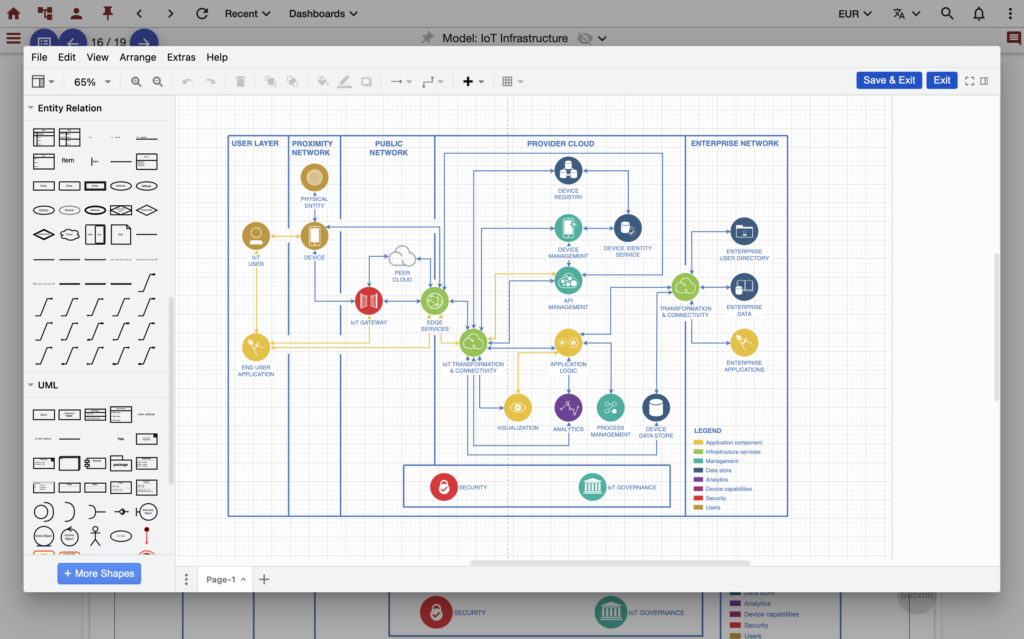
Assess and manage your technology-related risks using general surveys. The automated rollout of surveys enables simplified information gathering via clear accountability across the organization. Use this to define and prioritize remediation actions along with your classifications. Approve and track implementation of corrective actions.
Use a single source of truth to manage data across your organization. The right level of abstraction allows you to maintain high data quality from an architectural perspective. Manage applications and interfaces, add compliance rules, and ensure availability, consistency, data integrity, and security.
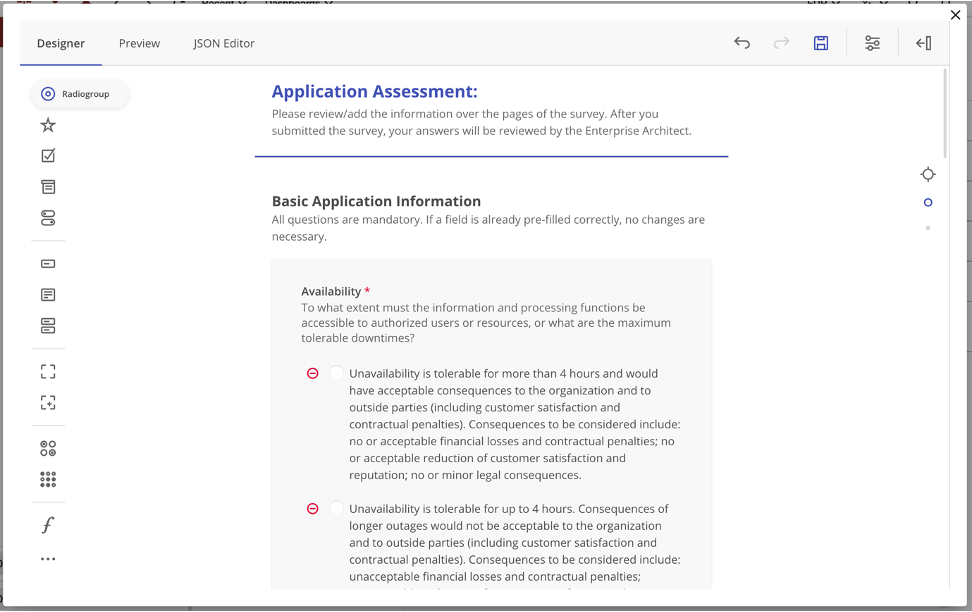
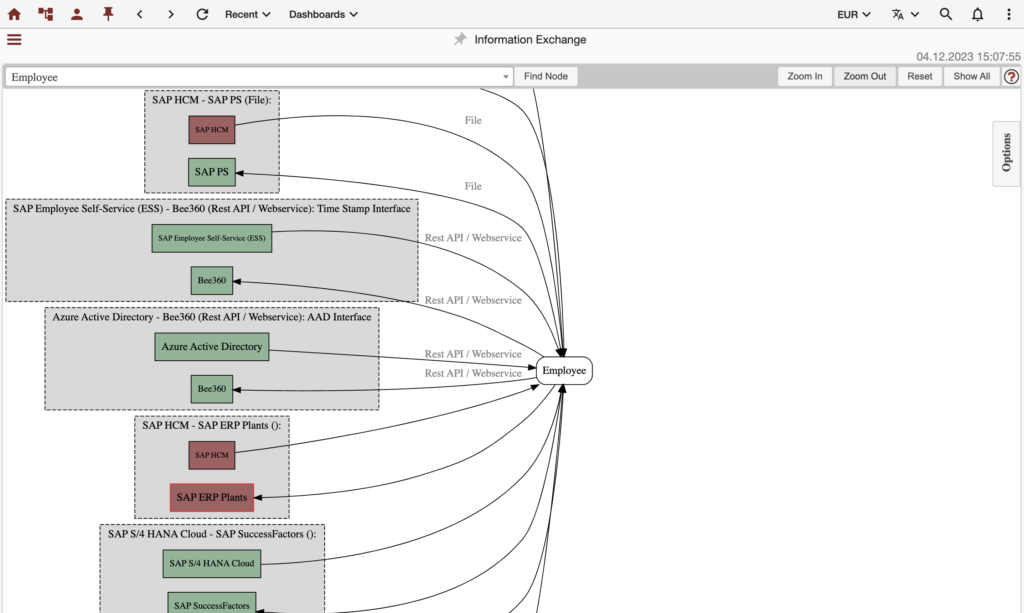
Bee360 to lead the global enterprise architecture tools market in 2023
“Bee360, with its robust EA tools offerings, provides a holistic approach that helps all the stakeholders to know how the changes in the economic framework data affect the enterprise architecture, which creates a constructive dialogue at every level in the organization. Furthermore, it helps organizations manage their strategies by defining strategic initiatives through roadmaps, related projects, services, and agile teams to help users understand the impact of such initiatives on enterprise architecture.”
Quadrant Knowledge Solutions, 2023
Requirements for effective EAM tools in organizations

By loading the video, you accept Vimeo's privacy policy.
Mehr erfahren
“If EA doesn’t add value, it’s not effective. {…} To be successful and effective, it is important that you change your mindset, that you have tools that allow you to collaborate and add value with your colleagues. This eventually leads to key concepts like looking at technical debt and integrating it into specific backlogs that portfolio management responds to. And as they’re included in the backlogs, they’re adequately funded. So you’ve effectively identified problems, gotten funding, and solved those problems.”
Gordon Barnett
Forrester Principal Analyst
Integrate all relevant departments into your architecture
REDUCE COSTS
- Analyze your system and application landscape with connection to IT costs
- Reduce effort and time and collaborate directly on the implementation of change in projects and agile developments
- Visibly place governance and compliance topics where they come into effect
Control transformation
-
Control with full visibility of strategy x architecture x portfolio
-
Provide your stakeholders with the information that they can actually see
- Design the roadmap for the transformation of your company
Ensure compliance
- Model capabilities, processes, architecture models and dependencies
- Create a collaborative, always up-to-date single source of truth with Bee360
- As a result, your organization always works with the most up-to-date data and keeps documentation fresh and close to reality.
- Ensure compliance and provide a stable foundation for your organization
Whether you want to learn more details about the platform, see Bee360 in action, deepen your knowledge of the underlying management concepts in our digital university, or connect with our community at an event – it’s all just a click away.
